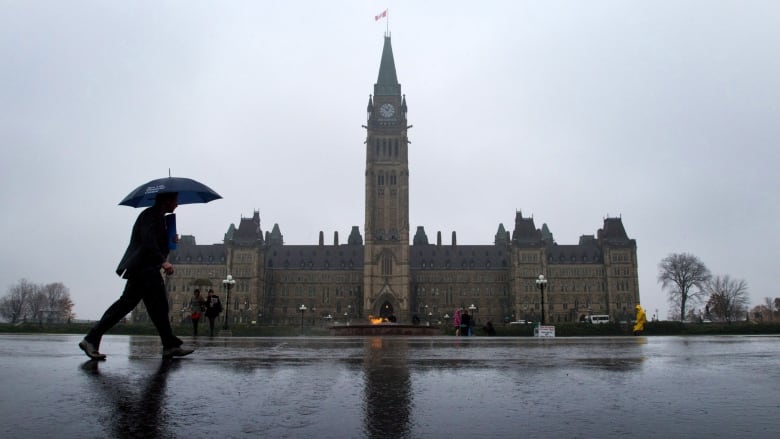Federal government still on pace for $15B deficit despite surplus through most of 2018-19
Last month's budget pledged billions in additional spending for previous fiscal year

The Trudeau government says it remains on track to post a budgetary shortfall of about $15 billion in 2018-19 even though a new estimate says the federal books ran a $3.1-billion surplus through the first 11 months of the fiscal year.
The number was released Friday in the Finance Department's latest fiscal monitor, a document that provides a preliminary look at the federal balance sheet.
In last month's budget, the Liberals projected the government to post a $14.9-billion shortfall in 2018-19 — so a report showing Ottawa $3.1 billion in the black with one month to go appears to have the government on pace for a better fiscal result.
The surplus, however, is poised to be more than wiped out by promised spending, the department said.
The budget contained "several significant measures" that will be booked in the 2018-19 fiscal year once the legislation is adopted, the report said.
It listed big-ticket items from the budget, including a $2.2-billion transfer to communities for infrastructure projects, $1 billion to improve energy efficiency in buildings and $900 million towards forgiving and reimbursing loans to Indigenous governments for comprehensive claim negotiations.
"Taking these measures, along with expected March 2019 results and end-of-year adjustments, into account, the results to date are broadly in line with the budgetary deficit for 2018-19 projected in budget 2019," the Finance Department said.
The government has raked in higher-than-expected revenues following a strong economic run in 2017 and 2018. The economy, however, has eased up in recent months after nearly stalling in late 2018 following a sudden fall in oil prices.
The report Friday said the April-to-February surplus was an improvement compared to the same period in 2017-18, when the government ran a deficit of $6 billion.
Jump in revenue
Overall revenues during the period were up $23.5 billion, or 8.5 per cent, compared to same 11-month stretch the previous year. The increase was due in large part to higher revenues from taxes and incoming employment-insurance premiums, the report said.
Program expenses rose by $12.7 billion, or 4.8 per cent, mostly because of increases in major transfers to individuals and other levels of government as well as higher direct program spending.
The department said public debt charges increased $1.7 billion, or 8.4 per cent, in a change mostly due to the higher effective interest rate on government debt.
In February alone, the report said the government had a surplus of $4.3 billion, which was driven by a revenue boost of $3.5 billion, or 12.2 per cent, compared to the year before.
The Liberals' budget also predicted the government would run annual deficits of $19.8 billion in 2019-20, $19.7 billion in 2020-21 and $14.8 billion in 2021-22.

With the federal election just six months away, Canadians should expect to hear more and more debate focused on the country's fiscal situation.
The opposition Conservatives and some economists have criticized the Trudeau government for ditching its 2015 campaign vow to run annual deficits of no more than $10 billion and to balance the books by 2019. The Liberals have also faced objections for not providing a timetable to return to budgetary balance.
Finance Minister Bill Morneau has instead focused on reducing the net-debt-to-GDP ratio — a measure of how burdensome the national debt is — each year. He's argued the extra spending, in areas such as infrastructure, has been necessary to help raise the country's long-term growth.
